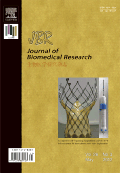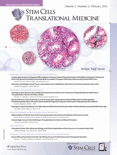
CYTOTHERAPY
Scope & Guideline
Connecting Researchers to the Frontiers of Medical Science.
Introduction
Aims and Scopes
- Cell Therapy Mechanisms and Applications:
Research explores the biological mechanisms by which various cell types, especially stem cells and immune cells, exert therapeutic effects in different clinical conditions, such as cancer, autoimmune diseases, and degenerative disorders. - Manufacturing and Quality Control:
The journal emphasizes the development of robust manufacturing processes for cell-based therapies, including adherence to Good Manufacturing Practices (GMP), quality control measures, and the implementation of automated systems to enhance scalability and reproducibility. - Clinical Trials and Translational Research:
Cytotherapy features studies that bridge the gap between laboratory research and clinical application, reporting on the safety, efficacy, and long-term outcomes of cell therapies in diverse patient populations. - Innovative Technologies and Methodologies:
The journal highlights advancements in technologies for cell engineering, including CRISPR/Cas9 gene editing, microfluidics, and novel bioreactor designs, which contribute to improved therapeutic products. - Extracellular Vesicles and Secretome Research:
There is a significant focus on the role of extracellular vesicles derived from stem cells in mediating therapeutic effects, including their immunomodulatory properties and potential in regenerative medicine. - Regulatory and Ethical Considerations:
Research addresses the regulatory frameworks and ethical considerations surrounding the development and use of cell therapies, ensuring compliance and patient safety.
Trending and Emerging
- Engineered Cell Therapies:
There is a significant increase in research focused on engineered cell therapies, particularly the development of CAR-T and other genetically modified immune cells, reflecting the growing interest in precision medicine and targeted therapies. - Extracellular Vesicles as Therapeutics:
Research exploring the therapeutic potential of extracellular vesicles derived from stem cells has surged, emphasizing their role in mediating immunomodulatory effects and tissue regeneration. - Automation and Robotics in Manufacturing:
The incorporation of automation and robotics into cell therapy manufacturing processes is a rapidly emerging trend, aimed at enhancing efficiency, consistency, and scalability in production. - Personalized Medicine Approaches:
Emerging themes around personalized medicine, including the use of patient-derived cells for tailored therapies, are gaining traction, as they promise improved outcomes and reduced adverse effects. - Regulatory Science and Guidelines:
There is a growing focus on regulatory science, addressing the complexities of bringing cell therapies to market and ensuring compliance with evolving regulatory frameworks. - Microfluidics and Novel Bioreactor Systems:
Research into microfluidic technologies and advanced bioreactor systems is trending, driven by the need for scalable and efficient production methods for cell therapies.
Declining or Waning
- Traditional Stem Cell Therapies:
There has been a noticeable decline in publications focused solely on traditional stem cell therapies without innovative modifications or applications, as the field shifts towards more advanced and engineered solutions. - Basic Biological Studies:
Research that primarily delves into the fundamental biology of stem cells without direct therapeutic implications appears to be waning, as there is a greater emphasis on translational research and clinical applications. - Single-Cell Analysis Techniques:
Although single-cell technologies were once a hot topic, the frequency of papers solely dedicated to basic single-cell analysis techniques has decreased, possibly due to the rapid evolution of more integrated and application-focused methodologies. - Animal Models of Disease:
The journal has seen less emphasis on animal model studies that do not directly translate to human applications, as researchers increasingly prioritize studies that have immediate clinical relevance.
Similar Journals

Journal of Biomedical Research
Innovating Research, Transforming MedicineJournal of Biomedical Research, published by Nanjing Medical University in China, is a prominent platform for groundbreaking discoveries in the fields of Biochemistry, Genetics, and Molecular Biology, as well as Medicine. With an ISSN of 1674-8301 and an E-ISSN of 1876-4819, the journal offers a vital opportunity for researchers, professionals, and students to disseminate insightful research findings. Although not currently available as an open access journal, its inclusion in the second quartile of both Biochemistry and Medicine categories underscores its growing influence and commitment to high-quality scholarship, as evidenced by its historical compliance with Scopus rankings prior to 2009. By fostering an interdisciplinary approach, the Journal of Biomedical Research aims to bridge gaps in current biomedical understanding and encourages innovative research that can lead to significant contributions in improving health outcomes. Its editorial policies guarantee rigorous peer review, making it a trusted source of knowledge in the biomedical community.

Cells, published by MDPI in Switzerland, is a leading open-access journal that has been disseminating groundbreaking research in the fields of Biochemistry, Genetics, and Molecular Biology since its inception in 2011. With an impressive E-ISSN of 2073-4409, the journal boasts a strong impact factor and ranks in the 84th percentile for Scopus ratings, underscoring its significance in advancing scientific knowledge. As a Q1-ranked journal in both 2023 and 2020, it serves as a premier platform for researchers, professionals, and students eager to explore innovative findings and methodologies. By providing unrestricted access to high-quality research, Cells plays a pivotal role in facilitating collaboration and inspiration within the global scientific community, making it an indispensable resource for anyone interested in cutting-edge discoveries in cellular biology.

Stem Cells International
Connecting Researchers to Transform Stem Cell ScienceStem Cells International is a premier open access journal published by HINDAWI LTD, focusing on the rapidly evolving field of stem cell research. With an ISSN of 1687-966X and E-ISSN 1687-9678, this journal has been a vital resource since its inception in 2010, showcasing innovative studies and breakthroughs up to 2024. Positioned in Q3 in Cell Biology and Q2 in Molecular Biology for 2023, as well as well-ranked in the Scopus database, the journal serves as an essential platform for researchers, professionals, and students dedicated to exploring the implications of stem cell technology in regenerative medicine and biological research. The open access model ensures wide accessibility, fostering collaboration and knowledge-sharing across the scientific community, making it a cornerstone in advancing the understanding and application of stem cell science.

Stem Cells Translational Medicine
Exploring New Frontiers in Translational MedicineStem Cells Translational Medicine, published by Oxford University Press, is a leading open-access journal that has been at the forefront of stem cell research since its launch in 2012. With an impressive impact across various categories, it occupies Q2 in Cell Biology and is highly recognized in Q1 for both Developmental Biology and Miscellaneous Medicine in 2023. Its strong Scopus rankings highlight its significance in the fields of Biochemistry, Genetics, and Molecular Biology, achieving an outstanding percentile ranking of 93rd in Developmental Biology. The journal provides a pivotal platform for researchers, professionals, and students to publish and access cutting-edge findings that contribute to the understanding and application of stem cell technology. With a commitment to disseminating high-quality scientific knowledge, Stem Cells Translational Medicine plays a vital role in advancing research and innovation within the rapidly evolving landscape of regenerative medicine.

Journal of Stem Cells & Regenerative Medicine
Empowering Discoveries in Regenerative MedicineThe Journal of Stem Cells & Regenerative Medicine is a leading publication dedicated to the advancing field of stem cell research and regenerative medicine. Established in India and published by JOURNAL STEM CELLS & REGENERATIVE MEDICINE, this Open Access journal has been available since 2007, providing researchers and practitioners with free and unrestricted access to high-quality articles. With an ISSN of 0973-7154, the journal is indexed in Scopus, featuring a wide array of topics and insights into biochemistry, biotechnology, cell biology, and molecular biology, as denoted by its relevant quartile rankings. This journal is committed to bridging the gap between laboratory research and clinical applications, making significant contributions to the scientific community. The convergence of innovative studies from 2010 to 2024 positions it as an invaluable resource for those looking to stay at the forefront of stem cell and regenerative medicine research.

Molecular Therapy Methods & Clinical Development
Transforming science into impactful therapies.Molecular Therapy Methods & Clinical Development, published by CELL PRESS, is a premier Open Access journal dedicated to advancing the field of gene and cell therapy through innovative methodologies and clinical developments. Since its inception in 2014, the journal has garnered significant attention within the research community, achieving impressive Q1 quartile rankings in Genetics, Molecular Biology, and Molecular Medicine as of 2023. With a commendable Scopus ranking that positions it within the top echelons of its categories, this journal serves as an essential platform for researchers, professionals, and students alike, providing access to cutting-edge research that drives the future of therapeutic approaches. With its commitment to Open Access, readers worldwide can easily access high-quality and impactful content that fosters collaboration and knowledge-sharing in this rapidly evolving domain. The journal’s scope encompasses crucial advancements in therapeutic methodologies, ensuring that it remains at the forefront of scientific discourse and innovation.

BIOCELL
Fostering Excellence in Cell ResearchBIOCELL is a distinguished peer-reviewed journal dedicated to the field of Cell Biology, published by TECH SCIENCE PRESS. Since its inception in 1995, the journal has been at the forefront of disseminating innovative research, with converged publication years extending from 1995 to 2013 and from 2015 to 2024. Although it currently holds a Q4 ranking in the Cell Biology category according to the 2023 category quartiles, BIOCELL aims to foster advancements by providing a platform for researchers, professionals, and students to share their findings in biochemistry, genetics, and molecular biology. The journal is available in both print (ISSN: 0327-9545) and digital formats (E-ISSN: 1667-5746) and seeks to attract contributions that enhance scholarly dialogue and understandings of cellular mechanisms and innovations. With a commitment to quality research and critical discourse, BIOCELL plays an important role in nurturing the scientific community within Argentina and beyond, offering vital insights that contribute to the advancement of the life sciences.

CYTOTECHNOLOGY
Empowering Researchers: Unleashing Potential in Biomedical Innovation.CYTOTECHNOLOGY, an esteemed journal published by Springer, stands as a vital resource in the fields of Bioengineering, Biomedical Engineering, and Biotechnology. With an impact factor reflective of its solid position within academia, this journal encompasses a broad scope dedicated to the advancement of cytotechnological research and applications from its inception in 1987 through to its latest volumes in 2024. Based in the Netherlands, it is committed to providing researchers, professionals, and students with high-quality, peer-reviewed articles that contribute to the understanding and innovations in cytotechnology. Although currently not open access, CYTOTECHNOLOGY has garnered a commendable reputation, holding Q3 rankings in multiple categories, indicating its relevance and influence within the scientific community. Researchers are encouraged to submit their cutting-edge findings to share insights that can spark further advancements in this dynamic field.

CANCER CELL
Innovative Insights for Oncology ProfessionalsCancer Cell, published by Cell Press, represents a pinnacle of research in the fields of cancer research, cell biology, and oncology. With an impressive Impact Factor and ranking as Q1 in prestigious categories for both 2023 and previous years, this journal stands out as a vital resource for professionals and scholars dedicated to understanding the molecular underpinnings of cancer. Operating from Cambridge, MA, Cancer Cell has been an essential platform for innovative studies since its inception in 2002. Although it is not an Open Access journal, its rigorous peer-review process ensures that only the highest quality research is disseminated to the scientific community. Readers can expect to find a wealth of knowledge ranging from cutting-edge therapies to insights into tumor biology, thereby contributing significantly to the advancement of oncology. With rankings placing it among the top echelons of related fields—#2 in Cancer Research and #6 in Oncology—Cancer Cell is an indispensable reference for anyone committed to the fight against cancer.

Tissue Engineering and Regenerative Medicine
Elevating the Science of Tissue Engineering and RegenerationTissue Engineering and Regenerative Medicine, published by the Korean Tissue Engineering Regenerative Medicine Society, is a distinguished journal focusing on the interdisciplinary fields of tissue engineering, regenerative medicine, and related biomedical innovations. With an ISSN of 1738-2696 and an E-ISSN of 2212-5469, this journal disseminates cutting-edge research and advancements pivotal to developing therapeutic strategies that improve tissue function and repair. As a testament to its scholarly impact, it holds a Q2 ranking in both Biomedical Engineering and Medicine (miscellaneous) categories, reflecting its influence and relevance within the scientific community, particularly with a Scopus rank placing it in the 82nd percentile among similar journals. Although the journal does not offer open access, it provides vital insights and knowledge to researchers, professionals, and students involved in the quest for innovative solutions in medical science and engineering. With its convergence years extending from 2008 to 2024, the journal continues to be an essential platform for the dissemination of high-quality research that drives the field forward.